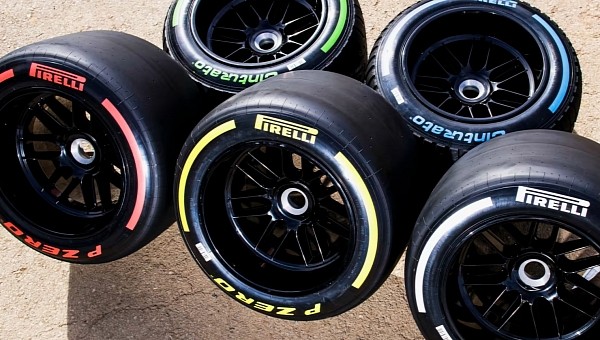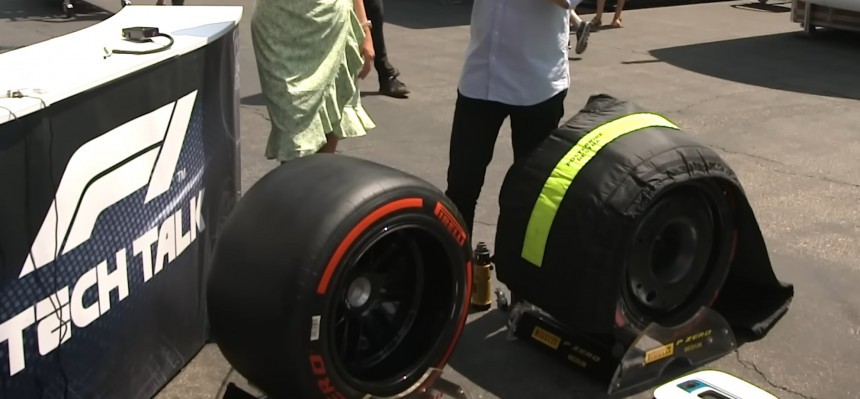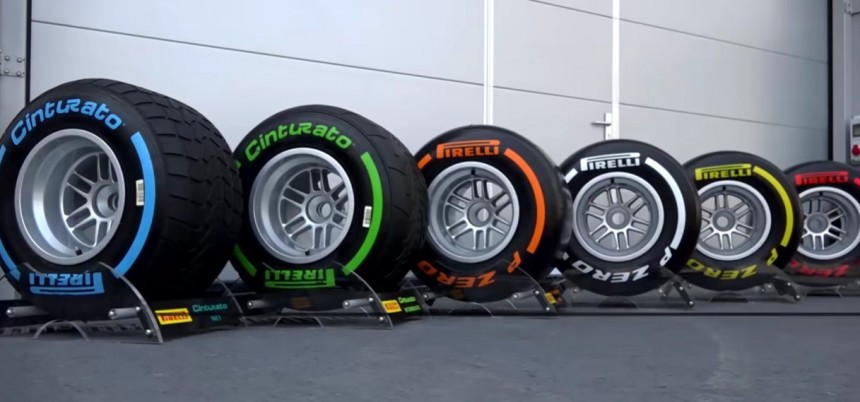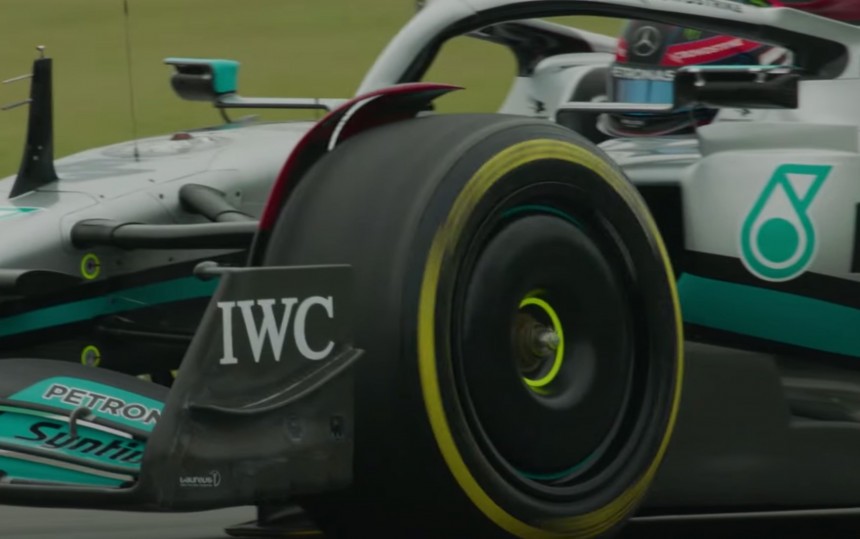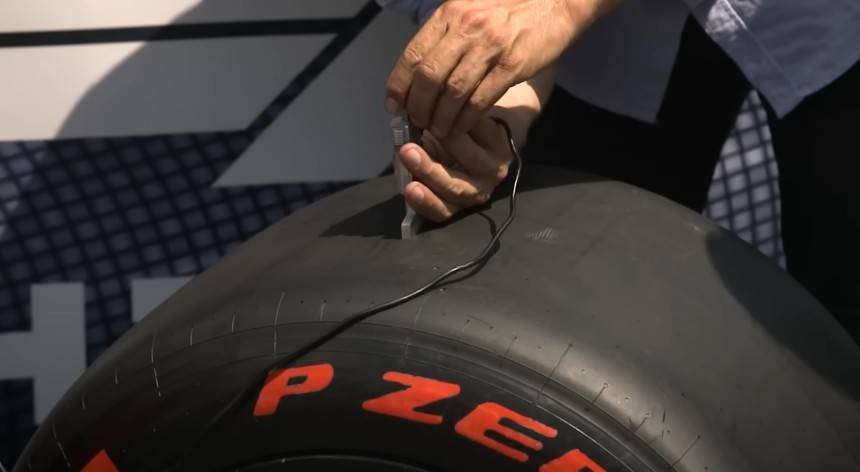A ban on tire blankets has been a subject of discussion in Formula 1 for a while now, with the aim of lowering the environmental impact of the sport. As these blankets draw a lot of power to heat the tires, a 2024 target has been set for getting rid of them.
So far, a couple of tests have taken place, none of which ended with particularly happy feedback from the drivers they will end up impacting the most. Many arguments were brought against this change, from explaining how they will not make Formula 1 more eco-friendly to warning against the increased risk of crashes.
Regardless of everything the drivers said, Pirelli and the FIA are still trying to move forward with the removal of tire blankets. Most recently, a test performed following the Bahrain Gran Prix showed promising results, encouraging Formula 1’s tire provider to keep going down this path.
But such a test definitely does not tell the whole story, as Sakhir is one of the most favorable venues where such a change can be tested. Both the temperature and demanding, high tire wear nature of the track played a huge role in making tires work without being warmed up prior to their use.
Of course, Pirelli and the FIA know this and are not making a decision based on this particular test alone. Plans are for this decision to be made later on during the 2023 season, in July, after the British Gran Prix at Silverstone, with more much-needed information expected to be gathered by that point.
But why is this such a big deal considering other championships like the WEC have already raced without tire warmers? To answer that, we must first understand how Formula 1 tires work and how much is demanded of them right from the second they go onto the car.
There are two main parts to the Formula 1 tire that are of interest to this issue, the surface or thread, which goes into contact with the asphalt, and the carcass or the interior of the tire. This is a relevant distinction because the two parts operate at different temperatures, with the thread having to deal with a lot more heat due to being in direct contact with the track.
When tire warmers are used, these two areas initially both have similar temperatures thanks to a gradual heat cycle. This causes less variance in tire pressure at the start of a session, leading to more predictable handling and making it easier to get the tire up to its correct operating temperature.
The opposite is true in the case of no blankets being applied, with the thread heating up faster than the carcass and lower initial pressures making the initial laps more difficult. This is one of the reasons why going out on cold tires could prove risky.
One more issue related to heat in Formula 1 is called tire scrubbing, because regardless of how helpful the tire blankets are, the tires must first be prepared for racing. The synthetic rubber used for this series of open-wheel racing is not ready to deliver peak performance right out of the box.
Consequently, drivers will often race on tires that have gone through a heat cycle to cure the rubber and have been prepared for racing. Usually, this is achieved by doing one or two warm-up laps in either practice or qualifying, which is enough to heat treat the tires without wearing them out.
If the tires are cold, this obviously becomes harder to do, as more laps are required to put heat into the tires, which could wear them out, making this practice obsolete. This means that the drivers would have to put the tires through this heat cycle during the race, making the first few laps on new rubber slow, cautious, and boring.
Now let’s move to a few tire issues related to temperature commonly seen in Formula 1. The first two are blistering and graining, and they are two facets of the same coin. Blistering occurs when the carcass temperature is higher than the one on the surface of the tires. This results in a hot pocket of air forming inside and blowing away a tiny chunk of rubber called a blister, which can affect performance.
Gaining happens when the opposite occurs, and the thread heats up considerably more than the carcass. When this happens, the surface of the tire becomes too soft and melty, resulting in small bits of rubber being torn out during high lateral loads in the corners. These pieces then get flung back, sticking to the tire and preventing proper contact between the thread and the track.
That’s a bad thing because those bits of rubber have been compromised by the extreme heat, becoming slippery. And situations like this could become more common if tire blankets are not used to create a uniform temperature within the tire prior to the start of the race.
Formula 1 uses five different tire compounds, ranging from the very soft C5 to the hard C1. When it comes to blistering and graining, softs will struggle more due to lower operating temperatures. The hard compounds, on the other hand, will struggle more with the next problem due to lower initial grip and longer warm-up phase.
The other issue that could be amplified by the lack of heat in the tires prior to the start of a Gran Prix is flat spots. These are exactly what they sound like, small parts of the thread that have been flattened under braking.
Unlike road cars, Formula 1 cars do not have ABS. This means that if the power of the brakes overcomes the traction of the tires, they could stop spinning and instead slide across the track, resulting in the development of a flat patch of rubber.
When the tires have not been prepared for the race via a heat cycle, such an issue is more likely to happen. What is worse is that this is a compounding issue, as once present, it increases the probability of a lock-up in the next corner.
These issues make the tires wear out faster, making the environmental argument relatively invalid, as resources are just wasted in a different area. Granted, the harder compounds, like the C1, will behave differently to the soft C5 in all of these areas, but they will all struggle without tire warmers.
In conclusion, there are a couple of issues that could make the tire blanket ban more trouble than it is worth. If Pirelli and the FIA want to move forward with the plan to remove tire warmers, solutions must be found. If the adverse effects of these changes are to be negated, new compounds will probably have to be introduced to deal with the different procedures of getting up to temperature.
Regardless of everything the drivers said, Pirelli and the FIA are still trying to move forward with the removal of tire blankets. Most recently, a test performed following the Bahrain Gran Prix showed promising results, encouraging Formula 1’s tire provider to keep going down this path.
But such a test definitely does not tell the whole story, as Sakhir is one of the most favorable venues where such a change can be tested. Both the temperature and demanding, high tire wear nature of the track played a huge role in making tires work without being warmed up prior to their use.
Of course, Pirelli and the FIA know this and are not making a decision based on this particular test alone. Plans are for this decision to be made later on during the 2023 season, in July, after the British Gran Prix at Silverstone, with more much-needed information expected to be gathered by that point.
There are two main parts to the Formula 1 tire that are of interest to this issue, the surface or thread, which goes into contact with the asphalt, and the carcass or the interior of the tire. This is a relevant distinction because the two parts operate at different temperatures, with the thread having to deal with a lot more heat due to being in direct contact with the track.
When tire warmers are used, these two areas initially both have similar temperatures thanks to a gradual heat cycle. This causes less variance in tire pressure at the start of a session, leading to more predictable handling and making it easier to get the tire up to its correct operating temperature.
The opposite is true in the case of no blankets being applied, with the thread heating up faster than the carcass and lower initial pressures making the initial laps more difficult. This is one of the reasons why going out on cold tires could prove risky.
Consequently, drivers will often race on tires that have gone through a heat cycle to cure the rubber and have been prepared for racing. Usually, this is achieved by doing one or two warm-up laps in either practice or qualifying, which is enough to heat treat the tires without wearing them out.
If the tires are cold, this obviously becomes harder to do, as more laps are required to put heat into the tires, which could wear them out, making this practice obsolete. This means that the drivers would have to put the tires through this heat cycle during the race, making the first few laps on new rubber slow, cautious, and boring.
Now let’s move to a few tire issues related to temperature commonly seen in Formula 1. The first two are blistering and graining, and they are two facets of the same coin. Blistering occurs when the carcass temperature is higher than the one on the surface of the tires. This results in a hot pocket of air forming inside and blowing away a tiny chunk of rubber called a blister, which can affect performance.
That’s a bad thing because those bits of rubber have been compromised by the extreme heat, becoming slippery. And situations like this could become more common if tire blankets are not used to create a uniform temperature within the tire prior to the start of the race.
Formula 1 uses five different tire compounds, ranging from the very soft C5 to the hard C1. When it comes to blistering and graining, softs will struggle more due to lower operating temperatures. The hard compounds, on the other hand, will struggle more with the next problem due to lower initial grip and longer warm-up phase.
The other issue that could be amplified by the lack of heat in the tires prior to the start of a Gran Prix is flat spots. These are exactly what they sound like, small parts of the thread that have been flattened under braking.
When the tires have not been prepared for the race via a heat cycle, such an issue is more likely to happen. What is worse is that this is a compounding issue, as once present, it increases the probability of a lock-up in the next corner.
These issues make the tires wear out faster, making the environmental argument relatively invalid, as resources are just wasted in a different area. Granted, the harder compounds, like the C1, will behave differently to the soft C5 in all of these areas, but they will all struggle without tire warmers.
In conclusion, there are a couple of issues that could make the tire blanket ban more trouble than it is worth. If Pirelli and the FIA want to move forward with the plan to remove tire warmers, solutions must be found. If the adverse effects of these changes are to be negated, new compounds will probably have to be introduced to deal with the different procedures of getting up to temperature.
